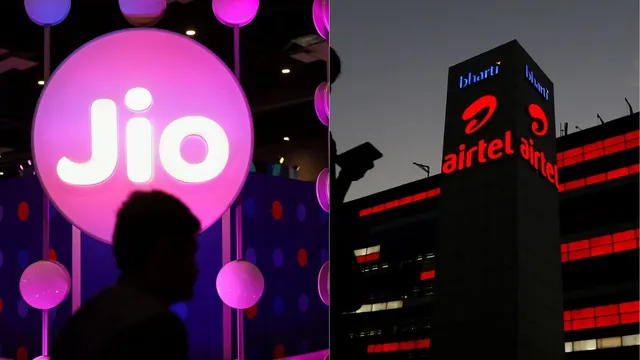- By Alex David
- Wed, 05 Nov 2025 07:16 PM (IST)
- Source:JND
India's telecom industry may soon witness another round of mobile data price increases, according to reports indicating Reliance Jio, Bharti Airtel, and Vodafone Idea (Vi). All three operators are planning tariff revisions by around 10% within months; if implemented, this would mark the first direct increase since 2024--and would mark a change from their pricing models aimed at increasing profitability or raising average revenue per user (ARPU), rather than calling it out as "price hikes".
Subtle Changes Already in Motion
Although neither Jio nor Airtel has officially announced an increase, both have recently phased out their entry-level 1GB per day prepaid plans in favour of more lucrative tiers, providing an indication of a possible increase.
Operator | Previous Base Plan | New Base Plan | Price | % Increase |
Jio | 1 GB/day at ₹249 | 1.5 GB/day | ₹299 | ~17% |
Airtel | 1 GB/day at ₹249 | 1.5 GB/day | ₹299 | ~17% |
Vi | 1 GB/day | Still available | ₹299 | 0% |
Telcos have successfully encouraged customers to spend more each month without officially raising tariffs by gradually eliminating cheaper data plans and forcing users into spending more than ever before. Airtel and Jio now list Rs299 as their baseline prepaid plan; Vi has kept its 1GB/day pack.
Why Telcos Are Preparing for Tariff “Repair”
Building and operating 5G networks have proven costly for telecom operators. Fiber expansion, spectrum payments and infrastructure upgrades continue to weigh on their finances.
Both Airtel and Vi have repeatedly emphasized the need for “tariff repair”—a term that refers to sustainable pricing aligned with operational costs rather than unsustainably cheap plans.
Jio has already begun subtly pushing users toward higher-value plans by subtly shifting recharge structures and more frequent plan cycles. Jio has actively encouraged customers to switch over to monthly or quarterly recharge cycles in order to enhance cash flow stability and customer retention.
Jio’s Official Stand
During its Q2 FY26 earnings call, Jio reported an ARPU of ₹211.4, up from ₹208.8 the previous quarter. The company stated that there were “no immediate plans” for a formal price hike but acknowledged that it is “nudging consumers to consume more and happily pay more.”
Jio has aligned their growth strategy with their aim to achieve sustainable revenue growth rather than short-term subscriber volume growth, especially as the company looks ahead to an anticipated initial public offering (IPO) within a short period.
When Could the Tariff Hike Happen?
Industry analysts suggest that an official tariff increase is not far away.
- Axis Capital and telecom analyst Gaurav Malhotra predict that the next hike could take place between December 2025 and June 2026.
- JP Morgan, citing data reported by Communications Today, suggests a potential 15% hike by Jio ahead of its IPO, which could trigger similar increases by Airtel and Vi, following previous industry patterns.
Due to India's highly coordinated telecom pricing history, any move by one major telecom player tends to cause all others to follow within weeks.
ALSO READ: Why Your Internet Sucks? Airtel vs Jio: The 5G Reality Check Behind The Hype
What This Means for Consumers
If the projected hike materialises, users can expect:
- Higher minimum recharge costs for daily data plans (from ₹299 upwards).
- Introduction of premium tiers promising “priority” speeds or better network quality.
- Gradual elimination of ultra-cheap plans, particularly for heavy data users.
Though this will increase monthly mobile expenses, operators say the increases are necessary to support 5G rollouts and improve overall network reliability.
Final Thoughts
A 10–15% tariff hike in the next few quarters seems almost inevitable as India’s telecom sector enters a phase of financial consolidation and 5G expansion. For users, it means slightly higher bills—but also the promise of more stable connectivity and better long-term service quality.
As things stand, the price of mobile data in India remains among the lowest in the world, even after past hikes. But with rising costs and new 5G investments, that era of ultra-cheap data may finally be coming to an end.

